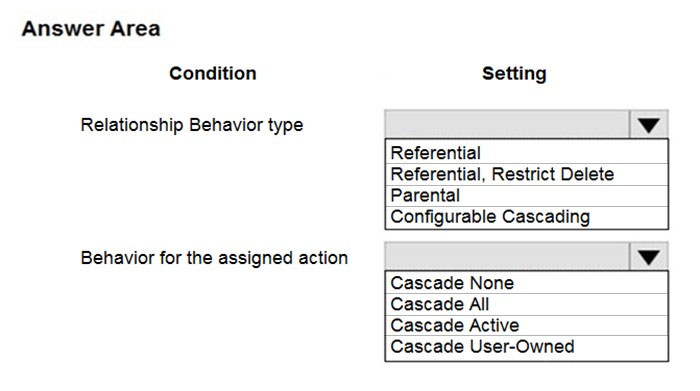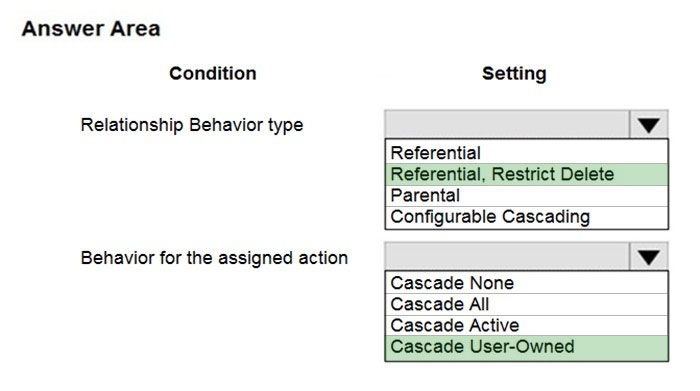
Expert Verified, Online, Free.

HOTSPOT -
A company has a Common Data Service (CDS) environment.
The following conditions must apply when accounts are reassigned:
✑ Ownership for completed tasks that are associated with the account must not change.
✑ Outstanding tasks must be reassigned to the new owner of the account.
You need to configure the relationship to meet the requirements.
Which settings should you use? To answer, select the appropriate options in the answer area.
NOTE: Each correct selection is worth one point.
Hot Area:

Luis_Avitia
Highly Voted 3 years agoemt2021
1 year, 3 months agoluvasgloves
Highly Voted 3 years ago4e8b388
Most Recent 4 months, 3 weeks agoSSS_S_S
8 months agojkaur
1 year, 1 month ago700157a
1 year, 1 month agoLearning_ninja
1 year, 9 months agoMoSun_Amini
2 years agoSD29
2 years agoMuzera
2 years, 1 month agoansrikanth1
2 years, 7 months agocrismadalina
2 years, 7 months agosumiiiiiiiii
2 years, 9 months agoFennek1893
3 years agohppp
2 years, 5 months agoMarkusH87
3 years ago